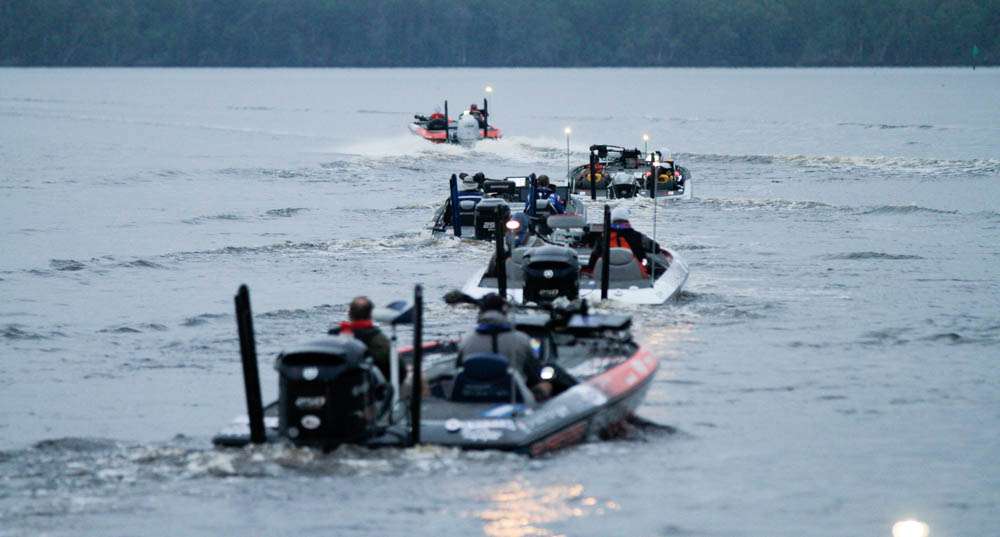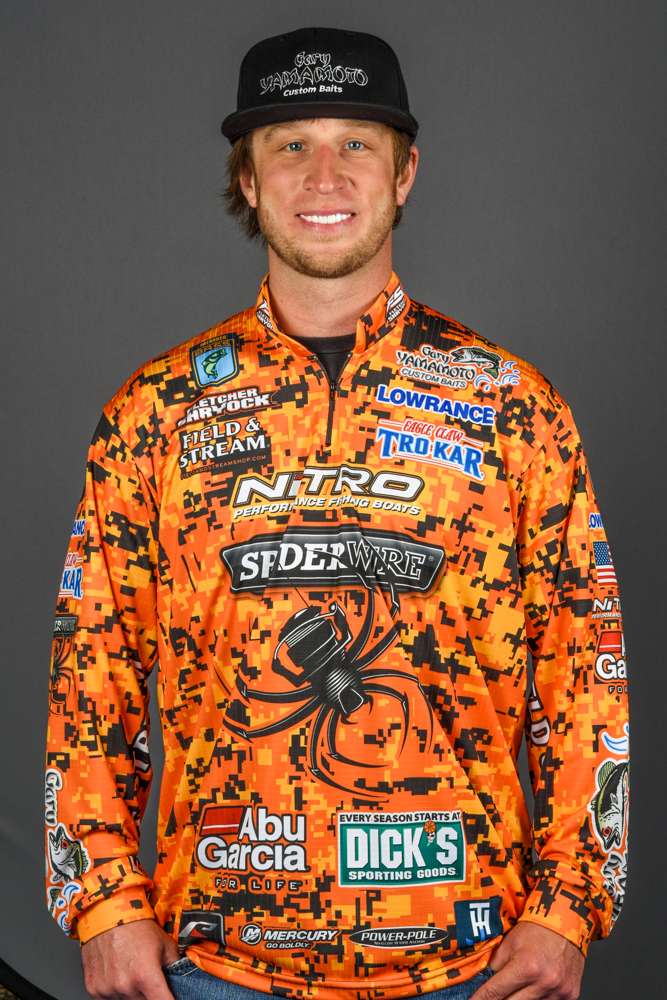
Heading into this past week’s Elite Series event on South Carolina’s Winyah Bay, much of the talk was focused on the long runs many of the anglers were going to make. As it turned out, it paid off for Britt Myers to burn a lot of boat gas. While we don’t have to make a long run in every tournament, nowadays it seems there’s no longer anything extraordinary about spending two hours of seat time (one way) to get to your fish.
Before any of us had ever heard of Winyah Bay, there were tour level events on massive waterways like the Louisiana Delta, California Delta and the Great Lakes. Even in more confined fisheries, there’s often an organizational reason for B.A.S.S. to launch us away from the prime fishing grounds. As a result, runs of 40 to 70 miles are now pretty standard, and much longer runs are increasingly common.
It wasn’t always that way for me. In my first Bassmaster Open, at Toho in 2011, I’d located some quality fish in Lake Kissimmee, but when it came time for the tournament, I was intimidated by the thought of making a 30 or 40 minute run and locking down. It seemed like it would take up too much of my day. Instead, I ended up fishing lesser than ideal water, and the results were subpar.
The lesson that I learned pretty quickly is that if you have the right fish located a long distance away, and you dial them in, then you typically don’t need much time to get the job done. I’ve made long runs in the past, and when we get there, my co-angler or Marshal has asked, “Do you know how many fish we passed on the way here?” The only answer I can think to give is that sometimes if you need to take money out of the bank, you need to drive past a few other banks before you get to yours. You have to go where your money is located and where you have the account number and code to withdraw it. There is more than likely tons of money in those other banks that you pass, but none of it is yours because you don’t have proper code to get the money out. Fishing is exactly the same.
The most extreme version of this truth that I’ve ever experienced is on the Great Lakes, where I once drove my boat for over six hours in 20-25 mph sustained winds to fish for a grand total of two hours. I knew that if and when I got to them, catching the fish would be the easiest part of day. You have to make sure that your boat is in tip-top shape, that you can get there safely, and that you can keep your fish alive. If you make a run that requires refueling, not only do you need to make sure that there’s a gas pump on the way back, but you have to be positive that there will be an attendant present when you stop.
Every little bit of planning efficiency gets magnified. You need to try to have a remedy for any “what if” scenario you can think of. You need to know not only how long it will take to get there, but how long it will take to get back under a wide variety of conditions. I like to plan to get back a little bit early, but while being late would be an absolute disaster, being too early is also a problem. An extra 10 or 15 minutes of fishing in the promised land can mean the difference between a win and just a decent finish. You need to put a magnifying glass on all of the variables. One hiccup and it all may be for nothing.
Proper equipment and maintenance are key any time, but they take on added significance when you won’t be anywhere near a service crew. In extreme cases you might not be near any other competitors or even other human beings. Therefore, I double check everything before I go out, and I bring along a full set of tools and a jump box to guard against mechanical issues.
I also recommend that you get a motorcycle helmet if you plan to make extended runs. A face mask is good to protect your face from the elements, but a helmet is better. A helmet will help keep you warm, dry, and save your ears from the noise and wind. Spend a few extra bucks and get the lightest one that you can, because if you make a long run in pounding waves, the heft of a heavier helmet will take a toll on your neck.
It also helps to be in good physical shape if you’re going to plan to grind out the long distances and catch a winning bag of fish. I’ve done some grueling stuff in my motocross racing career, but making long runs in a bass boat ranks up there as some of the gnarliest things I’ve ever done. You just pound and pound and pound, and as your body takes a licking, your mind is constantly running through all of the variables, wondering if you can pull it off. It’s eight hours where your mind and your body are running wide open, and at the end of the day you’re lucky if you don’t just fall into bed.
Before you consider taking a long ride on tournament day, you have to be sure that’s where a solid bag lives and if you can still catch them. If they’re not there, or conditions change, it may be a really long ride back empty handed. You have to really think about whether changing conditions are going to hurt your fishing area because you don’t have much time to adjust or grind it out. Things like changing water levels, changing water clarity, wind direction, wind speeds, possibly timing of the tide and cold fronts need to be paid close attention to.
So by now you’re probably wondering what I did at Winyah Bay. I made a long run, but not to the Cooper River where everyone expected the big bags to come from. I knew that they lived there, but I figured that it would be crowded, so I tried to play it safe. I underestimated the Cooper River and overestimated other areas. I went to an area where I thought I could get several bites and ended up catching four small ones both Thursday and Friday. I had a few that came unbuttoned both days but even if I had caught them, I still may not have made the 50 cut. I’m not happy about my decision to play it conservative. I’ve always preached the saying “Go where they live,” and I went against that this time around.
If you’re not on the right fish, it doesn’t matter if you have 10 hours of fishing time to catch them, you still can’t do well. When you’re on a solid bite, it realistically only takes two to four hours to get it done most of the time, if you really think about it. I wouldn’t recommend taking a long run just for the sake of getting away from everyone else, but by the same token, there’s no reason to fear burning a few tanks of gas in pursuit of being around a solid population of bass. Now in the Bassmaster Elite Series, it seems to be the new norm.

